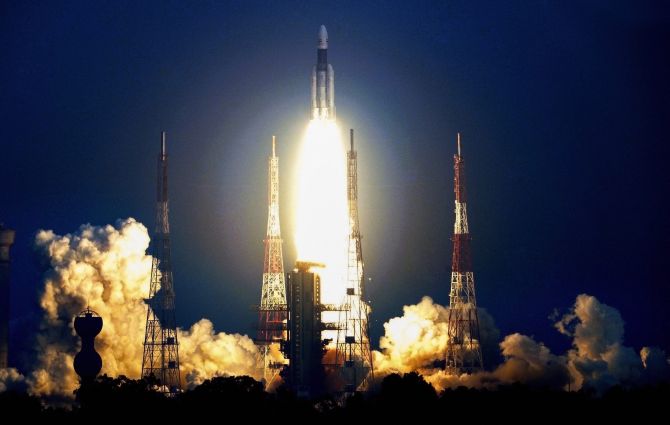GISAT-1 Military Satellite Launch Called Of Due To Technical Reasons

The ISRO has said that the launch of earth observation satellite Geo Imaging Satellite (GISAT-1) has been called off due to technical reasons
BANGALORE: The Indian Space Research Organisation (ISRO) announced on Wednesday that its launch of a new type of earth observation satellite, GISAT-1, originally scheduled for Thursday evening, has been postponed due to “technical reasons”.
ISRO stated that the new launch date will be announced later.
“The launch of GISAT-1 onboard GSLV-F10, planned for March 05, 2020, is postponed due to technical reasons. Revised launch date will be informed in due course,” ISRO tweeted on Wednesday afternoon.
GISAT-1 is short for Geo-Imaging Satellite and is the first of two earth imagers planned in a geostationary orbit.
It will constantly look over the Indian subcontinent from a perch 36,000 km above, adding a new edge to national security, apart from routine uses of earth imaging.
At 5.43 p.m. on March 5, a GSLV-MKII rocket carrying the spacecraft is due to lift off into space from the Satish Dhawan Space Centre in Sriharikota.
The 2,268-kg spacecraft will provide imageries of “large areas of interest” on earth in almost real time and at frequent intervals, according to ISRO information.
Until now, all Indian EOs have been in the range of 600-800 kg, placed at around 600 km from earth and circle it pole to pole once in around 90 minutes. They were launched by the smaller PSLV rocket.
GISAT-1, as also its future pair GISAT-2, will seem to be fixed over the same region, India, from a 36,000-km distance and go around earth equatorially with the same 24-hour orbital period as earth. The medium-lift GSLV is their launcher.
Once GISAT-1 stabilises in its orbit and starts working over the next few weeks, it will, according to ISRO, provide “quick monitoring of natural disasters, episodic events and any short-term events.
Its multi-spectral and hyperspectral payloads would help to get “spectral signatures for agriculture, forestry, mineralogy, disaster warning, cloud properties, snow and glaciers and oceanography.”
The rocket will take off from the second launch pad of the SDSC. In a flight lasting almost 19 minutes, the GSLV rocket, F-10, will lift the satellite to space in an initial elliptical orbit.
The satellite will be placed in a temporary orbit 170 km x 36,297 km from earth and at an inclination of 19.4°.




